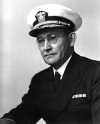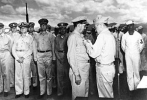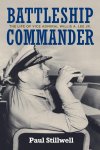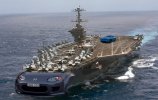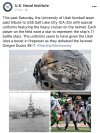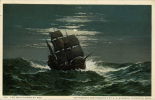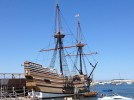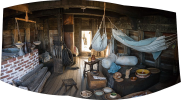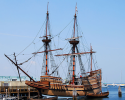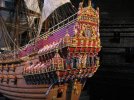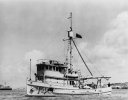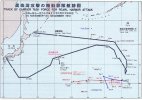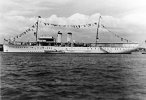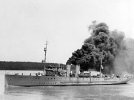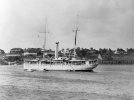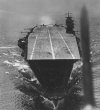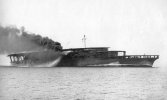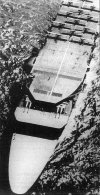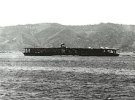Since I started with “target ships” I thought I should add one many of you might know.
The USAS American Mariner.
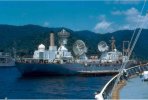
She started her life as Liberty Ship the SS George Calvert and served in WWII with the Merchant Marine. After the war she was transferred to the USCG as a training ship known as TS American Mariner. After the coasties were done she was mothballed only to be saved by the US Army and outfitted with the latest radar equipment as a test ship working closely with RCA and the fore-runner to DARPA. As the radar technology advanced the Air Force became interested and she was transferred again to do missile tracking and provide over watch and tracking for Wally Schirra’s space flight. Eventually the AF decided they didn’t like having a navy so they transferred her to the Navy to become T-AGM-12 doing essentially the same radar mission.
Having grown old in the service of her nation sense was towed out to the Chesapeake and scuttled in shallow water as a target where she remains today (although in a greatly reduced state). I guess she must be a good target for the guys at Pax River, but my limited research suggests she is used by military pilots from all along the East Coast.
So there you have it…if you have fired at this hulk you have fired on the only vessel in the US that has served the Merchant Marine, USCG, Army, USAF, and the US Navy!
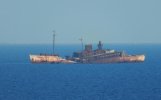
The USAS American Mariner.

She started her life as Liberty Ship the SS George Calvert and served in WWII with the Merchant Marine. After the war she was transferred to the USCG as a training ship known as TS American Mariner. After the coasties were done she was mothballed only to be saved by the US Army and outfitted with the latest radar equipment as a test ship working closely with RCA and the fore-runner to DARPA. As the radar technology advanced the Air Force became interested and she was transferred again to do missile tracking and provide over watch and tracking for Wally Schirra’s space flight. Eventually the AF decided they didn’t like having a navy so they transferred her to the Navy to become T-AGM-12 doing essentially the same radar mission.
Having grown old in the service of her nation sense was towed out to the Chesapeake and scuttled in shallow water as a target where she remains today (although in a greatly reduced state). I guess she must be a good target for the guys at Pax River, but my limited research suggests she is used by military pilots from all along the East Coast.
So there you have it…if you have fired at this hulk you have fired on the only vessel in the US that has served the Merchant Marine, USCG, Army, USAF, and the US Navy!


